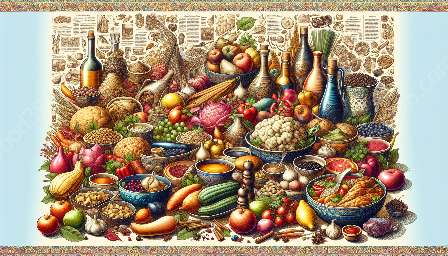Food culture has played a pivotal role in shaping the identities and traditions of ancient civilizations. Across various societies, early agricultural practices and the development of food cultures have contributed to both similarities and differences. By exploring the origin and evolution of food culture, we gain insight into the rich tapestry of human culinary history.
Early Agricultural Practices and the Development of Food Cultures
The establishment of early agricultural practices laid the foundation for the development of food cultures in ancient civilizations. The advent of settled agricultural societies led to the cultivation of crops and the domestication of animals, bringing about a fundamental shift in human lifestyles. In Mesopotamia, for example, the fertile lands of the Tigris and Euphrates rivers allowed for the cultivation of grains such as barley and wheat, while the Nile River served as a vital source of irrigation for the agricultural practices of ancient Egypt.
As surplus food production emerged, the division of labor grew, marking the rise of specialized food-related roles within these ancient societies. This specialization not only contributed to the economic and social structures of these civilizations but also influenced the culinary practices and food cultures that developed over time.
Ancient Mesopotamian Food Culture
Mesopotamian food culture was characterized by a reliance on grains as a staple food source. Barley and wheat formed the basis of their diet, and they were used to make various bread and porridge-like dishes. The region's rich agricultural output allowed for the cultivation of fruits such as dates and figs, which were incorporated into their cuisine. Additionally, Mesopotamians consumed a variety of dairy products, including cheese and yogurt, obtained from domesticated animals such as sheep and goats.
The culinary practices of ancient Mesopotamia also involved the use of spices and herbs to enhance the flavors of their dishes. Cumin, coriander, and sesame were commonly used, and they traded with neighboring civilizations to acquire exotic spices such as saffron and cinnamon. Meat, particularly from sheep and cattle, held a significant cultural and religious value, often being offered as sacrifices or consumed during festive occasions.
Ancient Egyptian Food Culture
The food culture of ancient Egypt was influenced by the agricultural practices along the banks of the Nile River. The cultivation of crops such as wheat and barley was central to their economy and food supply. The production of bread, a dietary staple, was a reflection of their grain-based agriculture, and it served as a key element in their daily meals.
Similar to the Mesopotamians, the ancient Egyptians also incorporated fruits such as figs, dates, and pomegranates into their cuisine. The abundant wildlife and fertile lands provided a diverse array of food sources, including fish from the Nile and various types of birds. The consumption of meat, particularly pork and fowl, was prevalent among the Egyptian populace, although it was less common among the lower echelons of society.
Origin and Evolution of Food Culture
The origin of food culture in ancient civilizations can be traced back to the agricultural practices and dietary habits of early human settlements. This cultural heritage evolved over centuries, influenced by environmental factors, trade routes, cultural exchanges, and technological advancements. The migration of people and the conquest of territories also played a significant role in shaping the food cultures of ancient civilizations.
Cultural Exchange and Influence
As ancient civilizations interacted through trade and conquest, the exchange of culinary traditions and foodstuffs occurred, leading to the enrichment and diversification of food cultures. The Silk Road, for instance, served as a conduit for the exchange of goods and ideas, facilitating the spread of spices, fruits, and cooking techniques across Asia, the Middle East, and the Mediterranean regions.
Moreover, the era of colonization and exploration brought about the amalgamation of diverse food cultures, leading to the introduction of new ingredients and culinary practices to different parts of the world. This intermingling of food cultures continues to resonate in modern-day cuisine, reflecting the enduring impact of ancient civilizations on global culinary diversity.
Technological Advancements
The evolution of food culture in ancient civilizations was closely tied to technological innovations that revolutionized food production, preservation, and preparation. Advancements such as the invention of pottery, milling tools, and fermentation techniques enabled the processing and storage of food items, expanding the culinary repertoire of ancient societies.
For instance, the use of fermentation to produce beer, wine, and bread not only provided sustenance but also held cultural and religious significance in various ancient civilizations. Additionally, the development of sophisticated irrigation systems and agricultural implements enhanced food production, allowing civilizations to flourish and develop increasingly complex food cultures.
Conclusion
Exploring the similarities and differences in food cultures across ancient civilizations affords us a deeper understanding of the intricacies and influences that have shaped human culinary traditions. From the agricultural practices of early settlements to the exchange of culinary knowledge and the impact of technological innovations, food culture has been a dynamic and integral aspect of human history. By embracing the diversity and richness of ancient food cultures, we celebrate the enduring legacy of culinary heritage that continues to permeate our modern gastronomic landscapes.


